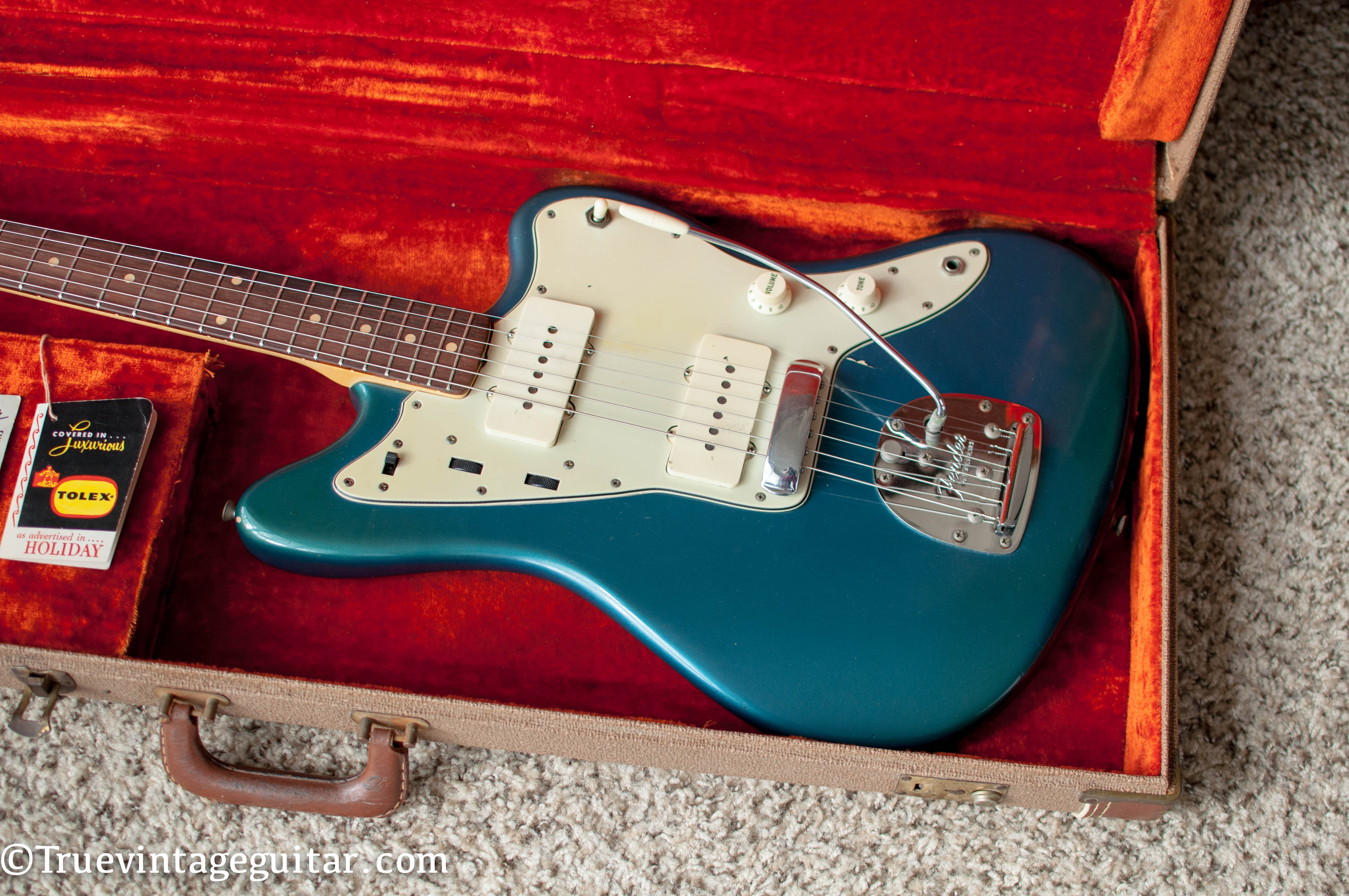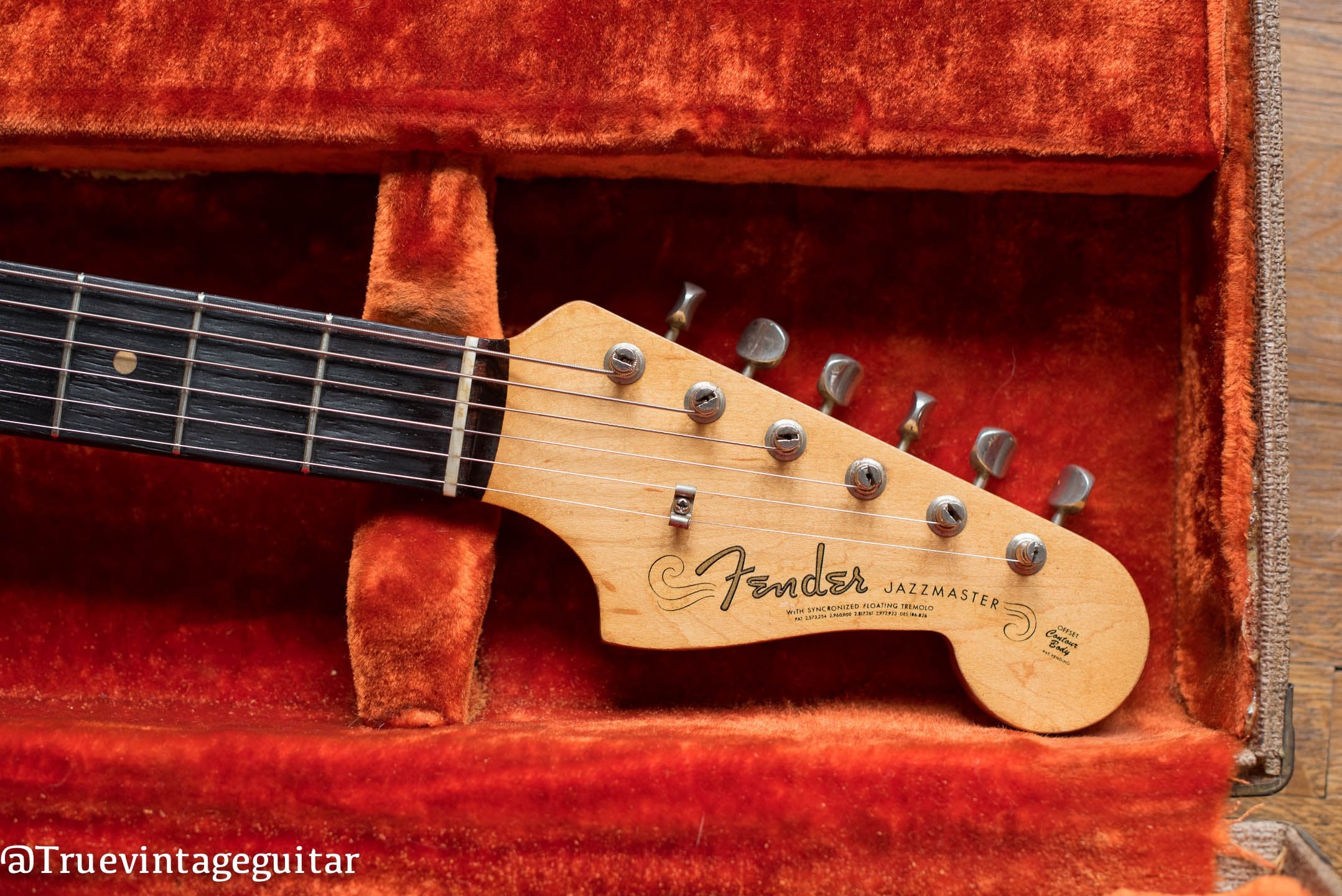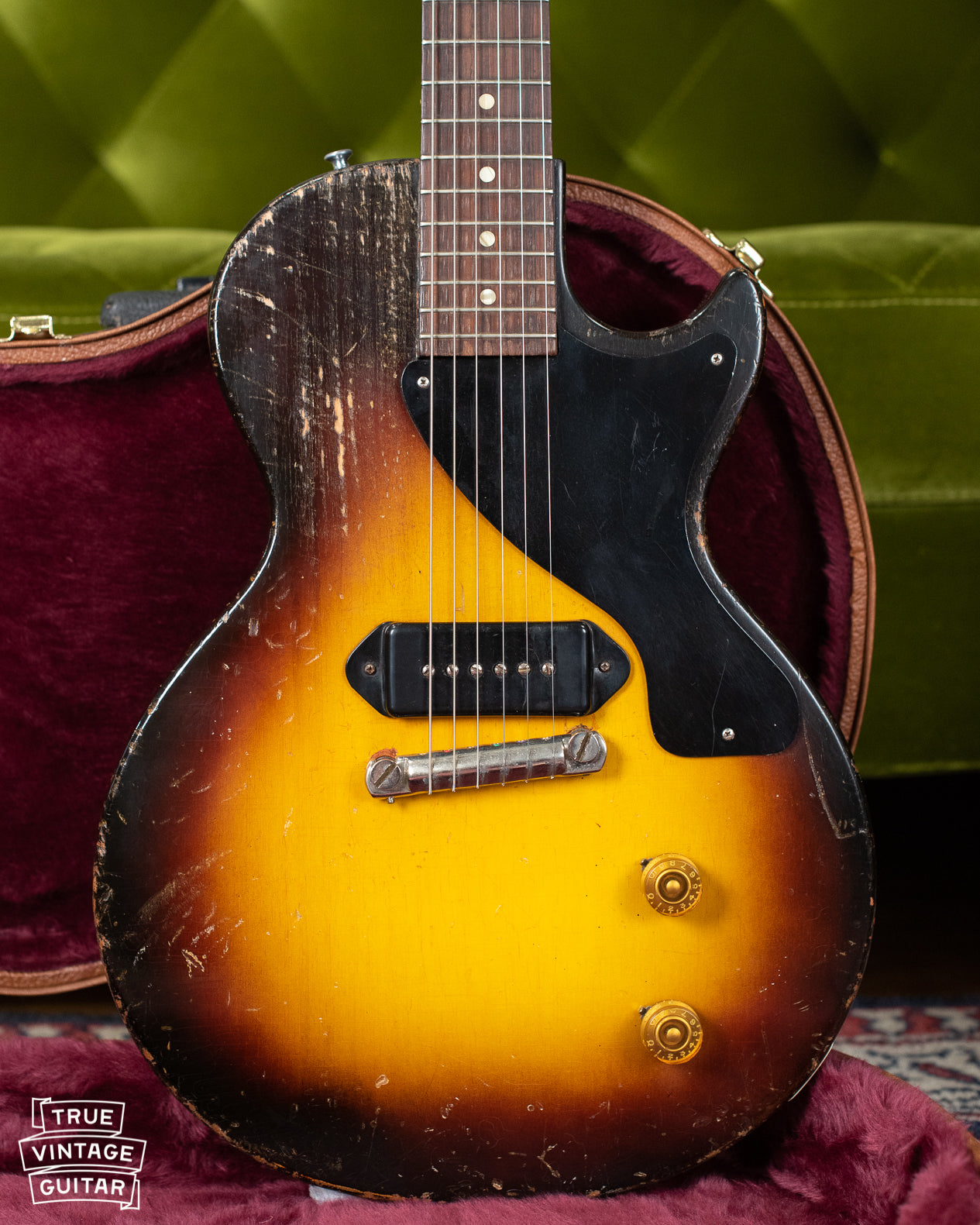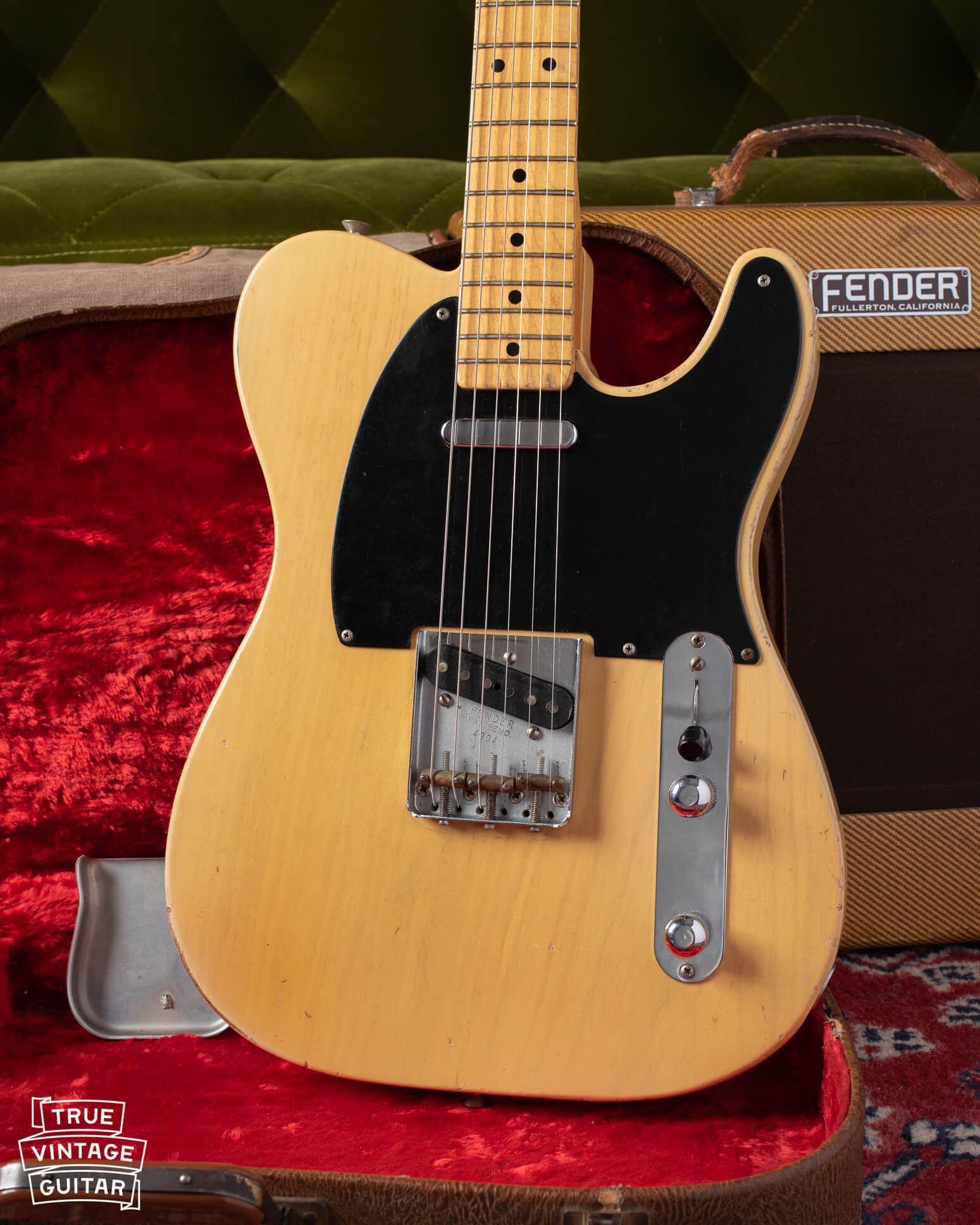This clean but lightly faded 1960 Fender Jazzmaster guitar came in and went out of the shop a few years back. I was thrilled to have it! It's one of the ones that "got away" I suppose. I remember it being a superbly comfortable weight, having a delightful playing neck and fretboard, as well as having warm but articulate Jazzmaster pickups. The lightly faded faux tortoiseshell pickguard really complimented the faded sunburst. 
I'm always looking for Jazzmaster guitars from the late 1950s up until production tailed off in the late 1970s. I was initially attracted to the cool shape of the body which Fender called the "Patented Offset Waist." This refers to the assymmetrical inward sloping part of the middle of the body (its waist) and not to the way that the bass and treble sides of the body are offset. This is different from the way that Gibson's Firebird model was constructed in that the waist of the Firebird was symmetrical for both the Reverse and non-Reverse versions. Still, Fender thought Gibson's Firebird guitar was a bit too close for comfort and sent correspondence to Kalamazoo to request that the Firebird be redesigned. It was redesigned shortly thereafter.
 Here's another example that got away: a 1962 Fender Jazzmaster guitar with original Lake Placid Blue Metallic finish with matching headstock. 1962 was a transitional year for many Fender guitars. One major change was how the Rosewood fretboard was mated to the Maple neck. The Rosewood fretboard was initially a thicker slab of Rosewood that was glued flat to the Maple but radiused on the top to make for a comfortable playing surface. In 1962, Fender began using a much thinner piece of Roswood that was curved on both the bottom and the top. Many guitar players and collectors prefer the older style slab fretboard opposed to the later veneer Rosewood fretboard. This 1962 Fender Jazzmaster featured both a slab Rosewood fretboard as well as a matched headstock to the body color. These features overlapped for less than a year.
Here's another example that got away: a 1962 Fender Jazzmaster guitar with original Lake Placid Blue Metallic finish with matching headstock. 1962 was a transitional year for many Fender guitars. One major change was how the Rosewood fretboard was mated to the Maple neck. The Rosewood fretboard was initially a thicker slab of Rosewood that was glued flat to the Maple but radiused on the top to make for a comfortable playing surface. In 1962, Fender began using a much thinner piece of Roswood that was curved on both the bottom and the top. Many guitar players and collectors prefer the older style slab fretboard opposed to the later veneer Rosewood fretboard. This 1962 Fender Jazzmaster featured both a slab Rosewood fretboard as well as a matched headstock to the body color. These features overlapped for less than a year.  This clean 1966 Fender Jazzmaster had only one owner before we acquired it. As luck would have it, he still had his original 1966 Fender Princeton Reverb-Amp in the closet as well! We were thrilled to get both. 1966 saw the introduction of the large pearloid fretboard markers seen on this nice example. Many younger collectors seem to prefer the flashier fretboard to the earlier style dots. I'm fond of both! Finally, this rare Black 1971 Fender Jazzmaster will always be remembered:
This clean 1966 Fender Jazzmaster had only one owner before we acquired it. As luck would have it, he still had his original 1966 Fender Princeton Reverb-Amp in the closet as well! We were thrilled to get both. 1966 saw the introduction of the large pearloid fretboard markers seen on this nice example. Many younger collectors seem to prefer the flashier fretboard to the earlier style dots. I'm fond of both! Finally, this rare Black 1971 Fender Jazzmaster will always be remembered:  What a beauty! I was a bit skeptical of the finish before I was able to inspect it in person. It was a textbook factory original Black finish with proper neck pocket and control cavity indicators. I don't think I've ever seen quite this much figure on any Fender neck before. It was a lovely playing guitar and looked killer too. I'm always looking to buy vintage Fender Jazzmaster guitars. Are you looking to sell your guitar? You can contact me here to send pictures of your vintage Fender guitar. I'd love to see it. --John
What a beauty! I was a bit skeptical of the finish before I was able to inspect it in person. It was a textbook factory original Black finish with proper neck pocket and control cavity indicators. I don't think I've ever seen quite this much figure on any Fender neck before. It was a lovely playing guitar and looked killer too. I'm always looking to buy vintage Fender Jazzmaster guitars. Are you looking to sell your guitar? You can contact me here to send pictures of your vintage Fender guitar. I'd love to see it. --John



